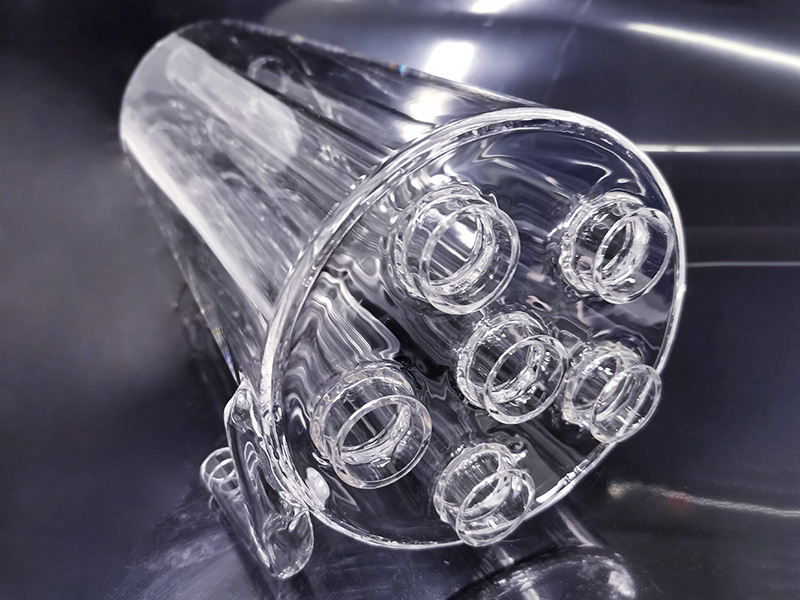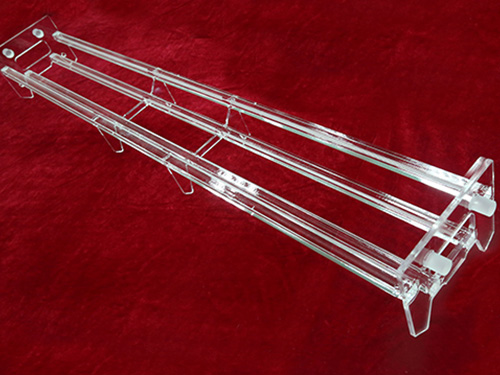Semiconductor Manufacturing: The Role of Quartz Glass
Semiconductor manufacturing involves a complex sequence of high-precision processes. In this demanding environment, quartz glass plays a critical role due to its superior thermal resistance, purity, and optical properties. From wafer processing to lithography, quartz is a foundational material used in multiple steps of the semiconductor manufacturing process.
Why Quartz Glass Is Essential in Semiconductor Fabrication
In modern semiconductor fabrication, components must endure extreme heat, chemical corrosion, and rapid thermal changes. Quartz glass, also called fused silica, meets these demands better than most other materials. It can withstand temperatures exceeding 1200°C and is highly resistant to plasma and corrosive gases.
Moreover, its low thermal expansion ensures minimal deformation during high-temperature cycles—an essential trait during diffusion and annealing.
Quartz Glass Applications in Semiconductor Manufacturing
Here are several key stages where quartz glass is indispensable:
1. Diffusion and Oxidation Furnaces
Quartz tubes and boats are used to hold silicon wafers during high-temperature processing. Because of its heat resistance and purity, quartz glass prevents contamination and distortion during diffusion and oxidation steps.
2. Etching Chambers and CVD Reactors
In semiconductor manufacturing processes, quartz parts are used in dry etching and chemical vapor deposition (CVD) equipment. These environments involve reactive gases and plasma, which quartz can resist without degrading.
3. Lithography and Optical Systems
Due to its excellent UV transmission, synthetic quartz is used in photolithography masks and lenses. Optical clarity is essential to accurately transfer micro-patterns onto wafers.
Key Advantages of Quartz in Semiconductor Processes
Let's look at why quartz is preferred in semiconductor chip manufacturing:
| Property | Benefit in Semiconductor Use |
|---|---|
| High thermal resistance | Stable in processes >1200°C |
| Low thermal expansion | Reduces stress and cracking during rapid heating |
| High purity (99.99% SiO₂) | Minimizes contamination of wafers |
| UV transparency | Essential for photolithography |
| Chemical resistance | Withstands HF, HCl, and plasma environments |
Quartz Glass vs Other Materials in Wafer Processing
Compared with alumina or stainless steel, quartz offers better purity and light transmission. It's also compatible with ultra-cleanroom environments used in fabs.
| Material | Heat Resistance | Chemical Resistance | Purity |
|---|---|---|---|
| Quartz Glass | ★★★★★ | ★★★★★ | ★★★★★ |
| Stainless Steel | ★★★ | ★★★★ | ★★★ |
| Alumina | ★★★★ | ★★★★ | ★★★★ |
Growing Demand for Quartz in Semiconductor Equipment
With advanced node technologies like 5nm and 3nm, precision and purity become more critical. Quartz is now used in:
Wafer carriers
Shower heads
Ring liners
Thermocouple sheaths
As semiconductor equipment becomes more complex, the demand for customized quartz components increases.
Choosing the Right Quartz Glass for Fabrication
Depending on your process, the right choice between fused quartz and synthetic quartz matters:
| Type | Best Use Cases |
|---|---|
| Fused Quartz | Diffusion tubes, boats, CVD chamber parts |
| Synthetic Quartz | Optical elements, laser windows, photolithography |
Both types offer superior performance, but synthetic quartz is preferred where optical clarity and ultra-high purity are required.
Quartz Glass Powers Semiconductor Innovation
In the highly competitive world of semiconductor manufacturing, quartz glass stands out for its unmatched thermal, chemical, and optical properties. From wafer production to final packaging, it supports every critical process step.
FG Quartz provides custom-engineered quartz parts to semiconductor fabs worldwide. Whether you need wafer carriers, precision tubes, or complex chamber components, we deliver performance you can count on.
📧 Contact Us: fgquartz@outlook.com





